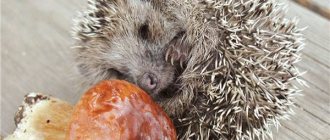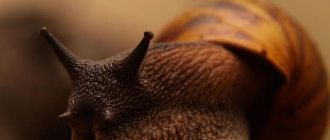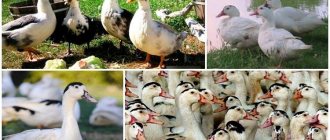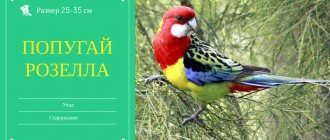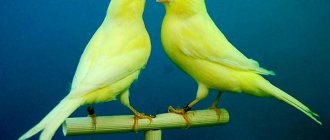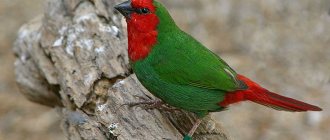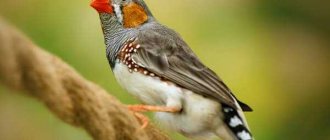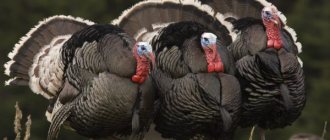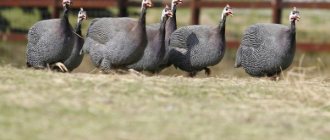Good afternoon, experienced and novice poultry farmers. Today we will talk in detail about raising turkeys at home. Recently, raising birds of various breeds at home has become increasingly popular. This fact is justified, since farming brings quite a good profit.
However, not all birds can bring the expected benefits after sale. Therefore, it is recommended for beginners to start their business with those breeds that will allow them to provide not only for their family, but also for the desired level of income.
Raising turkeys at home
One of the most profitable birds that can be bred at home is the turkey. The weight of one adult individual reaches 30 kg. The meat of these birds is highly valued and widely distributed among lovers of dietary products.
In addition to meat, birds produce a large number of eggs, which are also easily sold on the market. Therefore, a farm with turkey poults is considered one of the most profitable for breeders.
In order for turkey poults to grow healthy, produce strong offspring and have high egg production, all growing conditions must be observed. Particular attention is paid to diet.
The food should be balanced, enriched with vitamin complexes. After studying all the nuances of breeding turkey poults, you can begin arranging a home for the birds and purchasing chicks.
The profitability of raising turkeys on your own plot
Breeding turkey poults at home is a very profitable business. But it should be remembered that despite the profitability, it is a little more difficult to obtain good meat products compared to raising broilers.
The whole difficulty lies in the higher requirements of turkeys for living conditions. These birds find it more difficult to adapt to a new place, new food products, and drinking water.
Experienced poultry farmers highlight several positive aspects of turkey breeding:
- Low cholesterol percentage. This is a fairly significant fact due to which meat is considered dietary. Other birds have a higher percentage of cholesterol;
- Turkey meat contains a large amount of amino acids and vitamins that are necessary for normal human life;
- The products (meat and eggs) are very easily absorbed by the human body. Therefore, many nutritionists and doctors recommend consuming turkey meat in the diet during treatment of the digestive system;
- Does not cause an allergic reaction, therefore it is recommended for introduction into the diet of children;
- The liver of turkey poults contains a large amount of folic acid, as well as very rare vitamin K. Due to this fact, the product is recommended for pregnant women and small children.
Turkey has a lot of beneficial properties that have a positive effect on the human body. The product is widely in demand among athletes, since the dietary dish not only provides an opportunity to obtain protein for muscle growth, but also relieves fatigue after grueling workouts, has a positive effect on the nervous system, calming it, and promotes good sleep and sound sleep.
It is important to note that the eggs of this breed of birds are significantly larger in size compared to chicken eggs, and in terms of dietary characteristics they occupy a higher position after quail eggs.
But you won’t be able to make a big profit from turkey eggs alone, since they don’t lay eggs as often as chickens. Experienced farmers do not set themselves a target for income from selling eggs; as a rule, they serve as an additional bonus.
Note! The speed of their growth and the quality of meat depend on proper care of turkey poults.
Therefore, from the first days you should follow all the rules of maintenance, feeding and preventive measures.
Advice from experienced trailer operators
The main mistakes in keeping turkeys are due to the fact that the owner does not take into account the weak immunity and general health of the bird. Experienced farmers give the following advice:
- For the first 3–5 days of life, turkey chicks feed food on a soft cloth , since the chick’s beak is soft. It can damage it by hitting it on a hard surface.
- Children should be protected from stress. Frightened turkey chicks rush around the cage, crushing each other. Talking kindly to them while feeding and cleaning calms the bird.
- The paws of turkey poults should be kept warm until they go out to pasture. Babies are susceptible to colds. The bird should be taken out for a walk after the dew has dried.
- When trying to raise turkey poults without using antibiotics, you should add a lot of green onions (a natural antibiotic) and garlic arrows to the feed . Infusion of wormwood, tansy, and chamomile is poured into the water.
Raising turkey poults is a troublesome, but profitable business. With proper organization of the farm and compliance with feeding rules, it will be possible to obtain a lot of dietary meat. It is better for beginners to start with breeding light and medium crosses, as they have stronger immunity and are less demanding in nutrition.
Rules for keeping and raising turkeys at home
This is not to say that raising turkeys is very easy, but this family of birds requires some attention. Adults do not need constant supervision or special care, but young animals, in turn, are quite susceptible to any changes in housing and feeding conditions.
After transporting the chicks and moving them to a new home, you should carefully consider such aspects as:
- Firstly, the indoor temperature;
- secondly, regular ventilation of the room;
- thirdly, daily feeding with fresh food and drinking water;
- regular cleaning of the poultry house.
Before bringing the chicks to a new house, the necessary conditions for them should be provided. Particular attention is paid to the air temperature inside the room. After the young hatch, they require a fairly high ambient temperature, more than +33 degrees Celsius.
It is very important to sort individuals of different colors. Thus, chicks with light plumage require higher thermometer levels, while those with dark plumage tolerate temperatures at or even below normal.
Tips for every day
It should be remembered that turkeys are not waterfowl, so contact with water and moisture must be excluded until at least 5 weeks of age.
During the growth of young chicks, it is recommended to take preventive measures to prevent injury to the beaks. The fact is that when the chicks peck at the grain, they actively hit the still weak bone tissues of the beak and mandible against the stone.
To exclude an undesirable phenomenon, you should put bedding in the dish with the feed. Cardboard is great for this. A couple of layers will be enough to prevent turkey poults from reaching the hard surface of metal or concrete with their beaks.
- Advice! Turkey poults of different breeds can enter into conflict situations and cause injuries to each other. Therefore, to avoid fights, it is necessary to make your own walking areas on the site for each species of bird, preventing the mixing of individuals.
It is important to pay attention to diseases. It should be remembered that turkeys can quickly become infected from other birds living in the yard. Diseases appear especially often when kept together in the same area with chickens. The latter often cause the death of young animals from various diseases.
Another problem with raising turkeys is their tendency to gain fat. A negative phenomenon is observed when the volume of feed is not observed. A novice breeder needs to monitor the amount of feed offered.
Otherwise, the birds will very quickly become overgrown with fat, which cannot be sold on the market due to their uselessness. To eliminate this problem, grain and other fertilizers should be dosed. But also allow the birds to roam freely around the yard or in the pen for exercise.
Breed selection
The main step that determines the success of a business is a productive breed of turkeys.
White North Caucasian
Large birds weighing up to 15 kg (males) or up to 10 kg (females). Resistant to various diseases, with high rates of weight gain, and tolerate temperature fluctuations well. It can be raised for meat or eggs.
Bronze broad chested
The homeland of this breed of birds is the United States, but they quickly acclimatized in Russia.
Distinctive characteristics:
- The weight of a male is 10-15 kg, a female is 9 kg.
- Egg production up to 120 eggs annually.
Note! Not suitable for pasture breeding, only cage keeping is acceptable.
North Caucasian bronze
These are meat turkeys: males weigh more than 24 kg, females weigh 10 kg. The meat yield is high, up to 80%.
Representatives of the breed are unpretentious in feeding and care, but due to the impressive size of the males they require artificial insemination.
Hybrid Converter
This is a fairly large cross, easy to care for, and characterized by high rates of weight gain.
The birds have earned the honorary title of “Indo-ostrich” due to the fact that at the 22nd week they weigh more than 25 kg. It is beneficial to keep Hybrid Converter birds at home until they reach this indicator.
Room requirements for bird growth
From the first days of life, turkey poults must comply with the conditions of detention. The poultry house must meet all of the following aspects:
1. Temperature not lower than +10 degrees Celsius . This is one of the most important rules of content. During the cold season, the thermometer inside the poultry house should not fall below +10 degrees. Turkeys cannot tolerate cold, they can get sick and die. In this case, all cultivation costs will be in vain.
To prevent freezing of the room, work should be done in advance to insulate the walls, ceiling, floor, as well as window and door openings. It is very important to exclude drafts, but at the same time leave a window for ventilation, fresh air access and removal of ammonia vapors from the room.
2. Ventilation. The poultry house must be equipped with ventilation holes or even a hood. In summer, on hot days, the room should not be overheated; it should be a little cooler than outside. Therefore, it is very important to create a ventilation and airing system when equipping a room. It is allowed to install an electric hood, which will force air out of the room.
3. Air humidity should be within 65-70%. Such indicators must be observed, since very dry air, as well as too humid air, leads to the development of various diseases in birds.
4. Lighting. Turkey poults can be raised all year round, but it is very important to observe the daylight hours. This family of birds requires a 14-hour day. Therefore, it is necessary to install additional daylight lamps inside the poultry house to provide additional illumination after dark. For the correct life cycle, the lights must be turned on at 6 am.
In order to comply with all maintenance conditions, it is necessary to install a thermometer and moisture meter inside the poultry house. Thanks to these devices, the owner will be able to control and adjust the air temperature and humidity in the room.
Peculiarities
It is important to remember that young individuals of these birds are much more demanding of their living conditions. It is necessary to create the most comfortable microclimate for them.
Since young animals are especially sensitive to temperature conditions, as well as humidity levels, ventilation and heating systems are specially equipped for raising chicks. At the same time, you need to know that the temperature in the room for the chicks needs to be changed as they grow older.
When building a poultry house for young animals, it is important to treat all equipment used for safety reasons. For example, all wooden structures must be well sanded, and the room itself must be thoroughly treated with disinfectant solutions.
Place for females
Along with the generally accepted conditions for keeping turkeys, it is necessary to determine the location of the females in the poultry house. In a selected corner, nests are placed in which individuals will begin to hatch eggs. It is very important to install the nesting box in such a way that relatives cannot reach the clutch. Otherwise, the birds will begin to break the shell with their beak and eat it along with the contents.
For more comfortable incubation and laying, it is recommended to select an appropriate nest site. It is recommended to arrange a place for females in more secluded and protected corners of the room. The lighting there should be dim so that individuals feel safe and quiet. The twilight also prevents other birds from congregating near the female territory.
It is important to pay attention to the installation of nests. Experienced poultry farmers recommend building a small bench at a height of 30 cm from the floor. Females will easily jump onto a shelf with clutches and incubate eggs in conditions that are more comfortable for them. This height does not allow the nest to freeze, and will also protect the masonry from other birds.
If there are a large number of individuals, it is allowed to create entire steps to a height of no more than one meter from the ground. Several tiers for turkeys allow you to choose a convenient place for yourself.
Note! Female turkeys are loyal to the clutches of other turkeys, so it is possible to install one nest for several individuals at once. They will take turns incubating the eggs.
The location of the tiers for perching should be away from the entrance to eliminate possible drafts when the breeder enters. The rest of the birds are recommended to make ash baths, where the birds will clean their plumage, preventing the appearance of parasites on the body.
Major diseases
Raising turkeys requires knowledge of the main diseases that are inherent in birds. Domestic turkeys have strong immunity; the main cause of disease is violation of housing or feeding conditions.
Common diseases: vitamin deficiency, cannibalism or pecking. Infectious diseases that are characteristic of turkeys include: smallpox, respiratory mycoplasmosis. The main sources of infection are water, food, and contact with wild birds. You can tell that a turkey is sick by the first signs:
- Passivity, the desire to hide in the far corner.
- Loss of shine in plumage.
- A dull look.
- Loss of appetite.
Note! The cause of a serious disease in turkeys, hard goiter, is poor-quality food, the lack of shell rock and chalk in it.
For treatment you need to contact a veterinarian.
Walking pens
To prevent obesity, the bird needs space for physical activity. Walking pens are usually created for the summer. When fresh grass begins to grow, the sun comes out. Of course, birds can also receive fresh vitamins.
Inexperienced breeders should know that turkeys can fly. Of course, for short distances, but this is enough to fly over the fence and leave the yard. There are two ways to prevent escapes from your wards.
1. Create a pen with a mesh roof. As a rule, a garden net is used, which is mounted on top of the fence in the form of a roof. A fairly common method that ensures that all birds are in their place;
2. Wing clipping. This is a radical measure that should only be carried out by experienced farmers in exceptional cases. For example, with a small number of individuals and many years of experience in keeping birds. Of course, in large productions no one will trim wings.
When arranging a paddock or enclosure, it is very important to take into account some aspects and requirements for a place for walking. First of all, it is necessary to provide a shading angle where, in hot weather, birds can hide from the sweltering rays of the sun. Slate or other covering material is perfect for this, which is simply placed on the mesh roof, creating a shadow.
Walking turkeys
Individuals that are 1 to 2 weeks old can be released for walks. The young animals can walk for no more than 20 minutes, then they should be driven back into the house. As you get older, your walks become longer. And full-fledged walking is allowed only after the birds are covered with real and thick plumage, eliminating sunburn.
Important! Walking turkey poults is allowed only in good, calm and dry weather. In other cases, it is better to abstain in order to prevent the risk of bird disease.
When the birds are accustomed to the street and spend more time outside the house, then a feeder and drinking containers should be placed outside. Walks for adults should be carried out not only in summer, but also in winter.
An important condition for walking is the thermometer readings; they should not be lower than 20 degrees Celsius. In this case, it is recommended to lay a thick layer of hay or mown grass on the bottom of the enclosure. Such events will not allow the birds’ paws to freeze and get sick, and during the walk the birds will actively eat dry grass.
What to consider when feeding
Turkeys love brightly colored food and peck the yellow and green bits out of the mash first. To ensure that the mixture is eaten completely, the greens are cut as finely as possible, and the grain is turned into cereal with a particle size of 1 mm.
The bird is fed mash several times a day to prevent it from becoming sour. Turkey poults should eat the offered food within an hour. Remains should be removed. Dry feed should be kept in the feeder at all times.
When feeding your own mixtures, you need to add a premix for broilers to the grain mixture or add complex vitamins to the water.
Raising turkeys at home for meat
Raising turkeys at home and fattening them for meat. Like any family of birds, turkeys require the correct selection of food in accordance with their developmental periods. At the initial stage, starter feeds are used, then there are formulations for growth, and lastly for gaining muscle mass. Birds are transferred to meat fattening from the age of four months.
Over the next month, the turkeys are on constant walks, receive food three times a day, and also receive vitamin supplements. After one month, when the birds are 5 months old, their walking is significantly limited, and food is served 4 times a day. With this regime, it is very important to pay attention to the composition of the food offered to the birds.
What to feed turkeys at home.
The food must include the following products:
- Flour mixture;
- boiled potatoes;
- finely broken egg shells;
- greens and sprouted grains;
- beet;
- legumes;
- meat waste.
In this case, of the above products, flour mixture should be in larger quantities. To do this, prepare a wet mash. Take 100 g of flour and add 80 ml of milk. Everything is mixed and offered to the birds.
In order for birds to eat well and have an appetite, it is recommended to introduce steamed grain and yeast products into the diet. This feeding promotes rapid meat gain.
If, with such a diet, the breeder does not notice changes in body weight gain, then it is necessary to completely exclude the individuals from walking. Lack of physical activity will not allow you to waste energy, but will promote the growth of muscle fibers. Along with the lack of walking, protein mixtures and mixed feed are introduced into the diet, and the supply of mash is increased to twice a day.
For one individual, 800 g of the combined mixture per day and 200 g of the flour mixture are calculated. Thus, an adult should receive one kilogram of food per day.
How to care for young animals on a farm
If you decide to raise turkey poults yourself, be sure to warm the house to 32 degrees. This temperature should be present immediately after the chicks hatch and throughout the week. From 6.7 days the degrees drop. By day 12 it should already be about 26 degrees. Then you need to constantly maintain the temperature at 23 degrees.
Feeding young turkeys
Until 1.5 months of age, turkey poults do not have bone growths on their necks, so they need to be protected from dew, dampness and precipitation. To prevent damage to their beaks, food should be poured onto cardboard, but not onto iron.
Not recommended:
- walk turkey poults for up to a month;
- leave them with adult birds;
- place with other chicks;
- settle in a room where the surface is uneven (falls of turkey poults can cause beak damage).
Force-feeding of turkeys
Raising turkeys at home and fattening them for meat. There are situations when a farmer needs to receive marketable products in a shorter time. For this, there is a certain secret of forced feeding for accelerated weight gain.
The secret lies in the feeding system. Forced feeding involves preparing special pellets, which contain oats, bran, corn, flour, and a little yeast. All these products are ground and then thoroughly mixed. A small sausage is rolled from the finished mixture - a pellet, reaching a diameter of no more than 2 cm and a length of up to 6 cm.
Next, the process of force-feeding involves catching the turkey poult, opening the beak with your hands and placing the pellet into the esophagus. Before placing the sausage in the beak, it must be soaked in salt water. After laying, gently push the lump with your finger so that it gets further into the esophagus. After this, lightly presses on the neck, trying to push the pellets into the goiter. It is important to make sure that the food gets into the crop and fills it completely.
This feeding regimen allows you to reduce the time needed to gain muscle mass by at least two weeks. In some cases, this can save farmers and allow them to make a profit a little earlier than planned.
Reproduction methods
Raising turkeys at home and breeding. Among poultry farmers, there are two methods for producing young animals in a turkey herd. The first method involves incubatory hatching using special devices in which eggs with embryos are laid. The second method involves natural roosting of female hens. Both methods have their pros and cons, but each brings good results.
1. Incubator and cultivation . This method, if all the rules are followed, allows you to get a 100% result, in which each egg will produce a small chick. But the downside is that all the care of rearing rests with the breeder, because there is no hen. Lack of experience can be disappointing in this technique, since the farm owner will have to try hard to get the desired result;
2. Natural incubation . Turkeys are famous as excellent hens; a female can hatch up to 16 eggs at a time. But this technique cannot guarantee that each egg will hatch into a chick. The advantage is that the poultry farmer will not have to sweat and constantly look after the young animals, but the disadvantage is that he will not be able to dramatically increase the number of individuals in the flock.
Each of the above options in any case helps the breeder make a profit. Which method to use is up to the farmer himself to decide, relying on experience, knowledge, availability of the necessary equipment and time.
It is important to pay attention to the number of hens in the herd. If there are no plans for further breeding and sale of products on the market, then three or four hens are enough for self-sufficiency in meat and eggs.
Beautiful mothers
Turkeys are very responsible and caring mothers. Poultry keepers can freely use them to hatch young animals without using incubators. With their help, owners save not only money, but also their energy.
The female sometimes even forgets to eat, so she gets involved in incubating the eggs. The poultry house’s task is to monitor this process; nutrition should be regular.
Periodically remove the hen from the nest so that she can eat and drink water.
Often, other people's eggs are placed under turkeys: chicken, duck, etc. All will be wrapped in care and patiently hatched. One individual raises several dozen turkey poults; turkeys can also take care of the offspring.
Useful tips about raising turkeys at home
To achieve the desired goal, obtaining a strong generation of young animals, excellent meat, and high-quality masonry, it is recommended to use some advice from professional breeders:
- Firstly. Birds must be kept clean, so the premises should be cleaned daily. If mortality is detected, immediately remove them from the site and carry out preventive measures to maintain health.
- Secondly. Walking plays an important role in the development of birds; for this purpose, aviaries for walking are necessarily built.
- Third. Inside the poultry house there must be the required microclimate, temperature, humidity and dryness are maintained.
- But sick individuals should immediately isolate themselves from their relatives.
- Feeding times should always be the same. Standardized breaks between meals allow you to properly develop and gain muscle mass.
These are important rules about raising turkeys at home.
Preparation
Before landing, the birds remove the old bedding, wash the feeders and drinkers in an alkaline solution, sweep away the cobwebs, and whitewash the walls with slaked lime.
Premises requirements
The window area should be 1/10 of the floor area. In summer, the room is ventilated through the windows. In winter, it is ventilated through exhaust openings located in the walls and equipped with covers.
Roost and nests
Young animals are accustomed to perches located 10 cm above the floor on the 20th day. A turkey chick initially requires 8 cm of perch length, for an adult turkey – 35–40. For production, smoothly planed beams with a cross-section of 5x7 cm are taken. The height from the floor is 60–80 cm, the distance between the beams is 60 cm. A month before the start of egg-laying, nests are installed - wooden boxes lined with wood shavings. The dimensions of the nests intended for 4–5 laying hens are 40x50x60 cm.
Walk
A solarium with a concrete or earthen floor is installed next to the poultry house. To prevent birds from flying out, a net with 8x8 cm cells is stretched over the top of the walking area. In warm weather, turkey chicks are allowed to go for walks from the 10th day of life. The duration of exercise is increased daily by 10–15 minutes. Young animals go out to pasture at the age of 2 months.
Raising turkeys at home for beginners
Compliance with all the rules for maintaining a herd of turkeys will allow you to form your own business and provide your family with healthy meat. Responsibility is the key to a positive result.
Good luck!
Subscribe to site updates and our “Chicken” channel in Yandex Zen.
See you! And we are already preparing new and interesting articles about poultry farming for you.
Did you like our tips? Share with friends on social media. networks!
